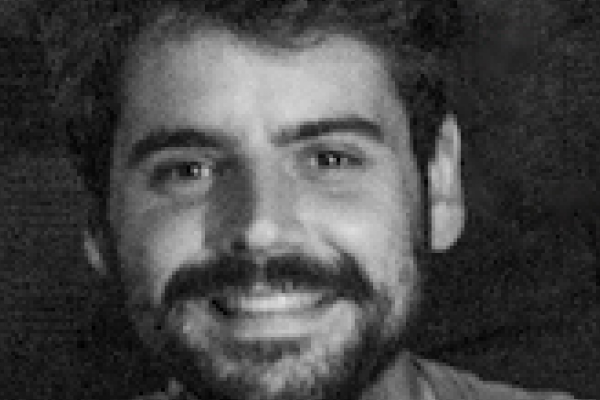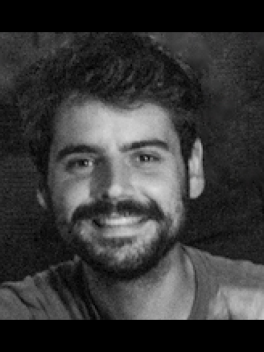Why Cross-Disciplinary Research Matters | Interview with Jasper Waugh-Quasebarth


The following interview of Jasper Waugh-Quasebarth was conducted by GAHDT Graduate Administrative Assistant, Eileen Horansky (PhD student, English).
Jasper Waugh-Quasebarth is the Public Folklorist and Postdoctoral Scholar at the Center for Folklore Studies at The Ohio State University. He currently teaches the Ohio Field School course and coordinates the Sharing Visions Project. His recent research interests have involved craft economies and production in global mountain forests, with a focus on Carpathia and Appalachia and collaborative methods. His upcoming book "Finding the Singing Spruce" explores the connections between the meaning of craft work and forest environments in the craft of musical instruments in West Virginia.
Eileen Horansky: Tell us about your current research project on craft economies and production? To what degree are cross-disciplinary perspectives or methods important to this project?
Jasper Waugh-Quasebarth: Since 2014, I have been working with musical instrument makers and artisan timber producers in Appalachia and the Carpathian region of Romania on a project entitled Finding the Singing Spruce, whose most recent iteration will be a book published by West Virginia University Press in Fall 2023. Through my own craft apprenticeship, extensive interviewing, collaborative writing, and archival research, I have investigated how these crafters build affective relationships with craft materials, forest environments, and fellow folklife practitioners. In a region where labor and environment have been historically disenchanted, musical instrument makers have shown how work and place can be re-enchanted by reconnecting relationships between human and forest communities through craft.
This sort of interweaving of human and nonhuman, material and ideal processes playing across scales of time and place in my work is embedded in political ecology and Appalachian Studies. Having a larger sense of how craft is entangled in changing forest management, arts patronage, and expressions of political economic power has been critical to exploring the social issues at the heart of the work. This project has also been enormously influenced by my work doing both craft and scholarship simultaneously. The craft of ethnography and the craft of instrument making are very closely aligned in that learning one, has had a significant impact on the other. Being an apprentice violinmaker, for instance, opened my work up to critique by my research partners, who have since extended the collaboration from making instruments together to building scholarship and research.
EH: What do you see as the major challenges of conducting cross-disciplinary research? What do you find most rewarding?
JWQ: Doing work across disciplinary toolkits and bodies of scholarship, I often feel as if I am drawing water from many deep wells and any one bucket is insufficient to understand the waters’ qualities. Within my own toolkit of ethnography, I can ask myself questions. However, using other kinds of toolkits yield questions that are more difficult to answer. This is where participating in cross-disciplinary research groups, such as those I contribute to in Appalachian Studies, has helped me.
When it comes to communicating research, I’ve had wonderful experiences building across social sciences and humanities but struggled at times to communicate across to colleagues in the natural sciences. While we might share values undergirding research outcomes and methods, working in institutional settings often prepares us to revert to our disciplinary norms when it comes to demonstrating the impact of our work. I’ve found more success in those cases by being a patient listener, supporter, and facilitator on the ground in community settings. Community partners are often experts at piecing together diverse knowledge and skills to fulfill a common need, and I’ve found great joy in supporting that work.
Positioning myself as a learner to gain new skills and ideas has been critical to the process of building relationships with collaborators across these spaces. By not limiting myself to one set of tools, I have built unanticipated life-long relationships with people and landscapes. Working back-to-back at violin benches, sitting alone with spruce trees to listen to their music, and exchanging screenshots of unearthed archival materials are all elements in a constellation of diverse experiences that have brought great personal meaning to this project.
EH: What ethical considerations drive your interests in craft economies and the environment?
JWQ: I am very committed to the communities which have sustained generations of my family across Appalachian West Virginia and Virginia. The underlying ethics are really about accountability to a variety of different communities who deserve support, recognition, and nuanced representation. At every stage, I try to think of the range of communities the work can serve. Finding common ground across creative expression is the place to begin laying building blocks to address the social and ecological issues that face communities of various kinds. Difficult issues like the reliance on extractive economies can be reframed using common values to reach a wider audience and to create new conversations in place of those deadlocked by political discourse.
Our work must be honest to the past and productive to the future. I learned through this project that when someone makes a violin, they make a violin for two hundred years. It goes out into the world, is played, broken apart, reassembled, refined by the hands of musicians who play it, silenced by the hands of those who do not. In the act of making, they and everyone who will ever play it, are also beholden to the two hundred years of a forest community that shaped the tree, the wind that shook it, and the water and sunlight that swelled its summer growth. We must think through the social lives of our projects within the communities in which they operate and use our positions to support and amplify work toward environmental and social justice.
